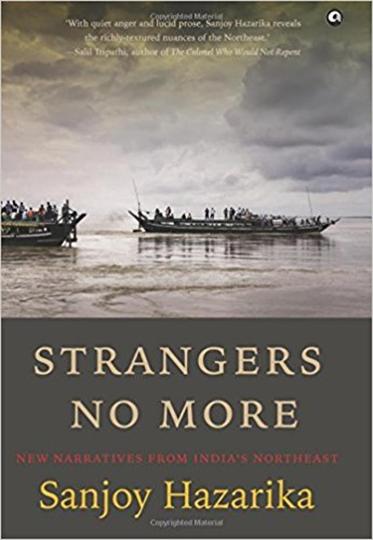In 1994, the journalist-author-activist Sanjoy Hazarika published Strangers of the Mist: Tales of War and Peace from India’s Northeast which, in his own word, “looks at how little men and women have reacted to imperial, insensitive administrations, politicians and policies, through their eyes and mine.” Published at a time when serious work on the Northeast was still rare, the book became a standard reference point for anyone interested in this still-misty region.
Now, 24 years later, Hazarika is back to pick up from where he left off. His latest book, Strangers No
Like its prequel, this book paints a wide canvas with a broad brush. This format worked in 1994 probably because there were few comparable works of this nature. Since then, the issues and the literature on them have grown so exponentially that it is hard to do justice to all of them in one book.
The chapters do not follow a thematically coherent order. The author flags problems and concerns that deserve our attention: the damage that AFSPA has wrought over the years, the issue of child miners and ecological damage in Meghalaya, dams and environmental destruction in Arunachal Pradesh and Sikkim, and the need to address post-conflict trauma in Mizoram, Assam, Nagaland.
The AFSPA remains Hazarika’s major obsession and that concern appears in the book throughout. Hazarika provides us an insider account of his experiences at the Justice Reddy Committee to review AFSPA, 1958 where he was member. He is clearly dismayed that the Government had failed to repeal the Act as the Committee had recommended. But, he takes some satisfaction in his own contribution to the Committee’s decision to recommend the repeal of the Act. He quoted M K Narayanan, the then National Security Adviser as complaining: “When we picked Reddy, we thought he was a ‘safe’ judge. General V Raghavan would represent the army’s interests; Dr Nakade was a friend of the Home Minister and PP Shrivastav was a home ministry person. Sanjoy Hazarika was in a minority. How were we to know that he would turn everyone to his side? Now, we are stuck with a report we can’t implement.”
“I thought Narayanan’s remark was one of the greatest compliments I had received,” he recorded.
This remark also nicely illustrates Delhi’s cynical strategy in “managing” the turmoil in the Northeast through the past decades.
But the repeal of the AFSPA, by itself, will be no panacea. The system of impunity has become so well entrenched that the law’s repeal may mean nothing more than a symbolic gesture. Incidentally, the Manipur valley, which saw the most dramatic protests against AFSPA, has been out of the Act’s purview since 2004 – a fact Hazarika does not mention anywhere – and it’s unclear if this makes any difference to the situation either way.
Elsewhere, Hazarika gives a riveting account of his role as a go-between in the 1990s to facilitate the peace talks between the Indian Government and the NSCN(IM). He also recounts the story of the Mizo insurgency through harrowing personal experiences. Hazarika is no admirer of the MNF leader Laldenga who comes off as self-serving, cowardly and unsure of himself and what he wants throughout. Hazarika suggests that Laldenga was not initially serious about independence, and his taking up arms has more to do with settling scores with the Mizo Union, whose leaders had allegedly thrown him out of his clerk’s position in the district council for fudging accounts. Interestingly, this picture of Laldenga bears striking similarities to accounts given by some Zo leaders in Manipur who accused Laldenga’s MNF of cowardly betrayal and worse which, in turn, precluded their united struggle for Zo reunification.
Tracing the transformation of the Northeast from a “migrant-receiving region” to a “migrant-producing area”, in the end, Hazarika argues that the Northeast people have come of age. Challenges remain. He sees hope in various people-centric interventions, peace movements and examples of individual courage exhibited by the likes of Niketu Iralu in Nagaland. He argues for the Indian government to apologize for the deep wounds inflicted during the Naga and Mizo insurgencies. He bemoans the justice and closure that still elude the victims of the Nellie massacre and such other killings. He stresses the need for reconciliation and dialogue amongst groups, saying it is precisely the internal fighting and mayhem that augments the state’s control.
Hazarika is a conscientious and sensitive writer who feels deeply about these issues. But his concerns are too many, too scattered. The prose is meandering, preachy in tone, and tends to jump from one topic to an unrelated other. The uninitiated will love it, but for those conversant with the literature on the Northeast, some stories will sound dated, and at times, repetitive.
In the process, this book becomes a mirror image of the region it so ambitiously tries to describe: promising and alluring, yet perplexing and disjointed. But as a cry of despair from one who may be the most authoritative commentator on the Northeast, this book deserves our attention.



Leave a reply